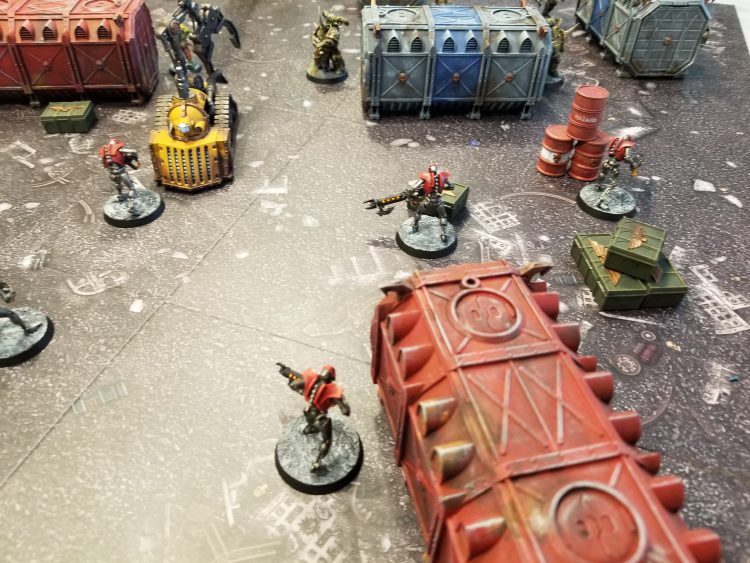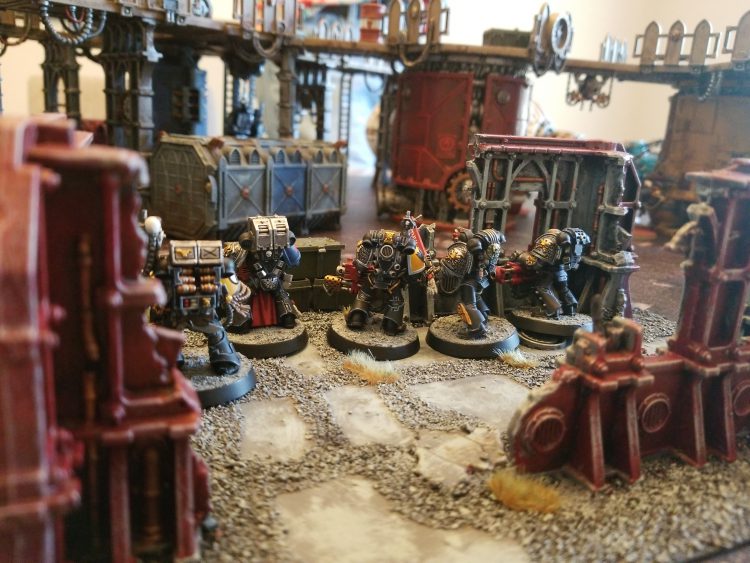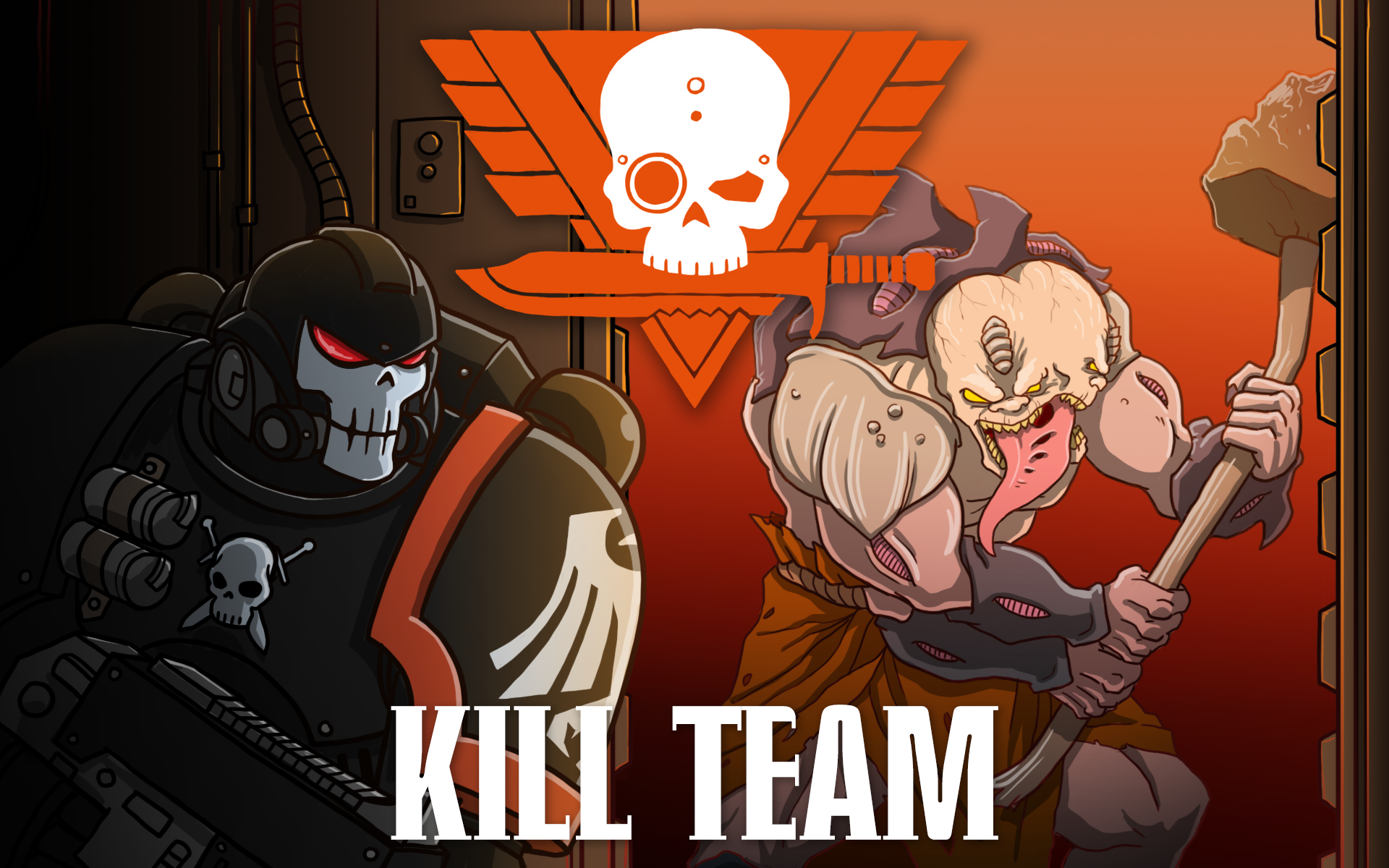Kill Team 2.0 is out and it’s an entirely new game, complete with its own rules system and unit statlines. If you missed our review of it, you can find that here. One thing we’re sure of is that while the new Kill Team is a lot of fun, it can also be pretty complicated. So in this article we’re going to talk about how you can make your first games a bit easier and ensure that you ramp up slowly.
If you’re looking for a more general overview of the new Kill Team and it’s rules, you can find our review here, and if you want to get a feel for how the game plays and the tactics involved, check out Wing’s battle report here.

1. Open War: The Best Place to Start
There’s a lot to track in new Kill Team and your first game or two should focus on acquainting yourself with how activations and APL, movement, terrain, and combat work. The Kill Team 2.0 Rulebook has a single Open War mission and that’s the best place to start in our opinion – this excludes the extra cruft of TacOps (secondary objectives), Equipment, and Scouting. These are important aspects of the game, don’t get me wrong – they’re just not something you should focus on in your first few games.
The Control the Killzone mission here has a fine setup, with four player-placed objectives and a 1-AP action to Secure them each turn, which mimics what you’ll see in other missions.
2. Picking Kill Teams: Simpler is Better
You’re going to need a pair of Kill Teams for your first game and whether you’re playing with the Kommandos and Veteran Guardsmen of the boxed set or one of the other factions in the upcoming Compendium, my advice is to keep your teams smaller and less complicated to start. Start with basic models who will mostly likely just be moving and shooting, then gradually add on more gunners and other specialists to your team. Don’t sweat rosters and the pre-game decisions about which fire teams to bring – just string together a legal team with the models you have on hand.

3. Before You Begin: Review Attack and Defense
Another thing to do before you start is go over the rules for Shooting and Fighting with your opponent. These are the two principle mechanics you’ll be employing the most during the game and it’s important you understand how attack and defense dice work in each. Two of the things I see new players struggling with most are critical hits and defenses in shooting and just understanding how melee combat works generally, since it’s very easy to charge in and get completely wrecked, especially if you expect to kill your opponent and walk out unscathed.
4. Get a good mix of battlefield terrain
Terrain is an incredibly important part of Kill Team, and while the terrain rules are refreshingly simple, it’s important to get them down and understand how they interact with the Conceal and Engage orders. Make sure your first battlefield has a couple of easily-reachable Vantage points, some Light and Heavy terrain, and make sure you point out any Traversable terrain on the battlefield.

5. Don’t sweat Strategic/Tactical Ploys too much
Strategic and Tactical Ploys are another big part of the game but they’re not critical to your first game. Don’t get hung up on making clever tactical plays and using your CP to the fullest – focus on getting the mechanics down and toss in a CP re-roll here or there as needed. Then consider coming back to these in your second game.
Bonus: Have Some Fun With It and Experiment
Remember to try out different things. Don’t focus too much on winning or losing (but do pay attention to how you’d win or lose), and try out lots of things to test out the rules. Charge an operative so you can try out the combat rules – melee combat in Kill Team takes a lot of getting used to and mastering it will be a real challenge. Get to a higher vantage point to negate someone’s Conceal order. Daisy chain your models to get cover benefits. There are quite a few nuances to learn and it’s worth testing a few things to see how they work out.
What Comes Next
There you have it – our advice for playing your first game. After you get your first game down, we’d recommend doing another game or two with the Open War mission and ramping up your kill teams and the use of Strategic and Tactical Ploys, before moving on to the Matched Play missions, which add Equipment to the mix. And then once your group are all experienced Kill Team Veterans, give the Spec Ops campaign rules a look, because they’re pretty great.
Have any questions or feedback? Drop us a note in the comments below or email us at contact@goonhammer.com.


